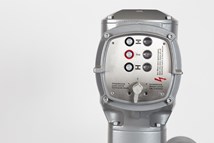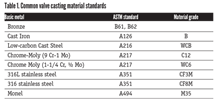State allocations revealed for pending infrastructure bill
California, Texas and New York will likely cash in big on the trillion-dollar infrastructure package if the bill makes its way to President Biden’s desk, according to CNBC on Aug. 31.
#water-wastewater
California, Texas and New York will likely cash in big on the trillion-dollar infrastructure package if the bill makes its way to President Joe Biden’s desk, according to CNBC on Aug. 31.
But far less populous states, such as Montana and Alaska, will get the most money per capita.
The administration said Californians should plan for at least $44.56 billion in infrastructure funds, the biggest sum for any state, with highways and public transit alone comprising about $34.8 billion of that total.
Texas came in at No. 2 with an estimated allocation of $35.44 billion, between $26.9 billion in estimated highway funds and $3.3 billion in estimated public transit funds. New York, in third, is projected to receive $26.92 billion.
CNBC’s analysis shows that Vermont, Montana, Wyoming and Alaska lead when it comes to estimated per capita infrastructure spending, with at least $3,500 per resident. California’s estimated per capita allocation is less than $1,250 per resident.
The White House, hoping to make good on Biden’s campaign promises ahead of the 2022 midterm elections, has billed the plan as a generational investment. The Senate overwhelmingly approved the $1 trillion infrastructure bill earlier this month in an effort to rebuild the nation’s crumbling roads and bridges and fund new climate resilience and broadband initiatives. The House aims to pass the bill by October.
The administration touts that the infrastructure plan “will grow the economy, enhance our competitiveness, create good jobs” and improve a variety of other metrics.
It’s important to note that the White House estimates are summaries based on the allocation of funds in prior legislation. The current piece of legislation could change the formulas that determine which factors decide how much money a state or city receives.
Any improvements are likely to happen at the local level, since states and municipalities are the stewards of some 90% of non-defense public infrastructure assets and usually bear 75% of their cost of upkeep, according to the Center on Budget and Policy Priorities, a progressive think tank.
Current White House estimates also leave out competitive grant programs for specific, economically significant one-time projects. Localities can often use those grants to help finance an isolated project if the federal government determines that a particular bridge or tunnel has outsized economic impact on a region.
Washington typically funds major surface infrastructure initiatives through the Transportation Department, which issues grants to states. Those grants can come from several funds, including the Highway Trust Fund, which generates a significant amount of its revenues from gasoline taxes.
Other factors that go into determining grant size can be a bit more complicated, as grants may be larger or smaller based on how many big cities a given state has. Or, if the grant is marked for urban areas, the size is determined by how many people live in a particular city.
The full CNBC article is available here.
RELATED CONTENT
-
General Considerations for Control and Choke Valves Used in Offshore Oil and Gas Production
The application of control and choke valves used in offshore oil and gas production is a very broad field and in this article, some of the main considerations for valve selection will be addressed.
-
The Biggest Valves: Sizes Growing in Step with Greater Demand
Valve manufacturers that have the expertise, skills, equipment and facilities to produce large valves are rare.
-
Valves in Space
All of these valves need to be built to precise fits and finishes and to stringent performance requirements because “On a spacecraft, everything has got to work. If it breaks, you’re done.”







 Unloading large gate valve.jpg;maxWidth=214)


